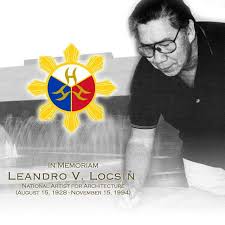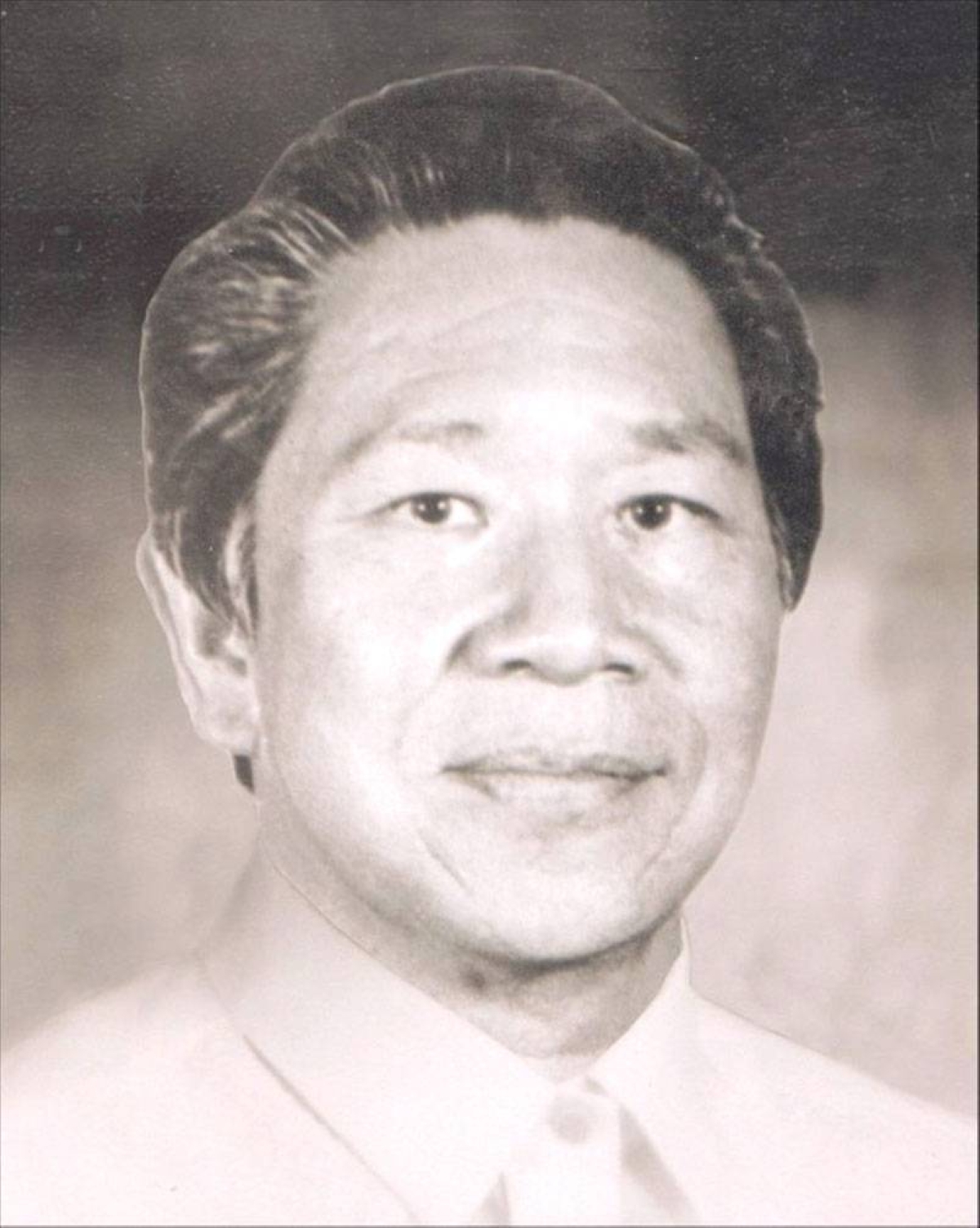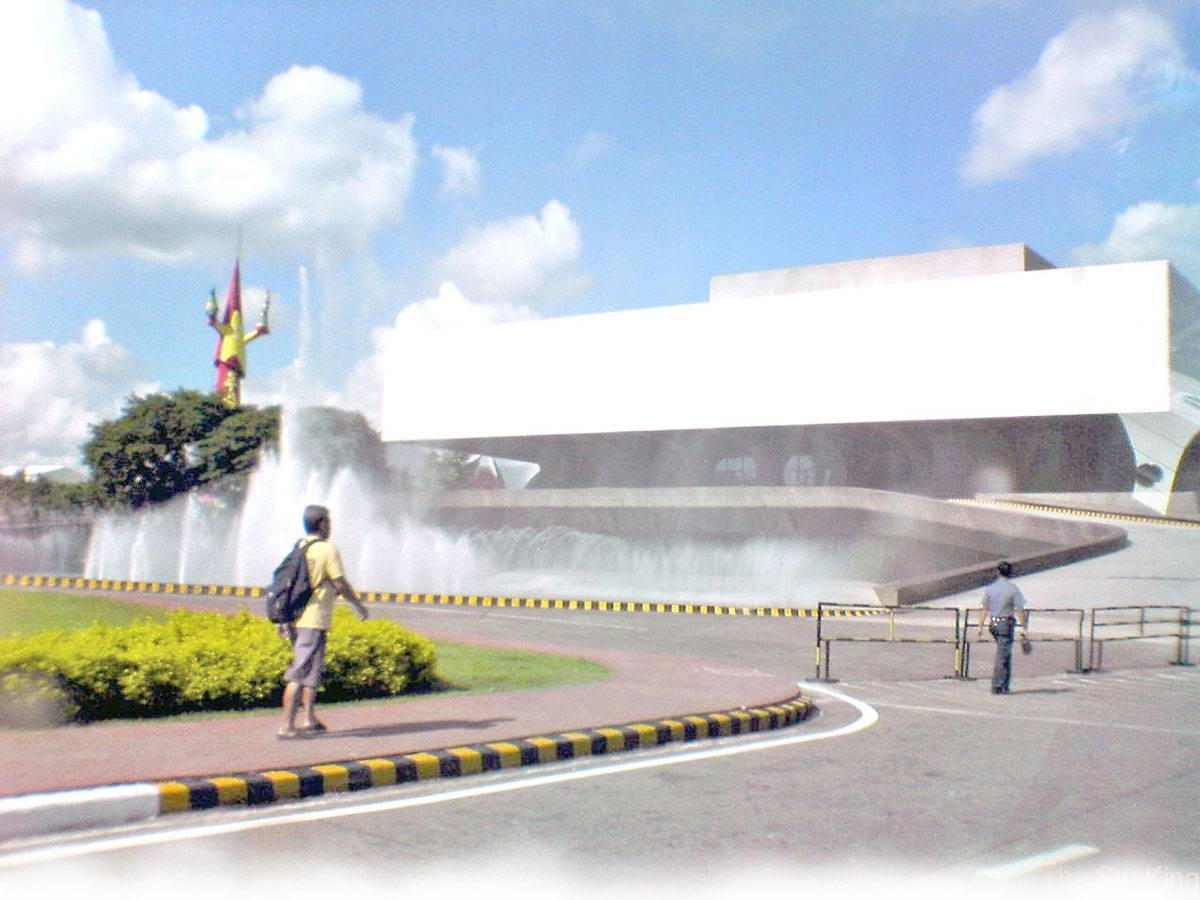ARCHITECTURE | HIS MONUMENTS ARE EVERYWHERE | Leandro Locsin
Photo: Architecture Leandro V. Locsin.
.

ON the grave of English architect Sir Christopher Wren is an inscription that reads in Latin, “Si monumentum requiris circumspice.” This is translated as “If you seek my monument, look around you.”
This text very much underscores the achievements of renowned architects for their works are all around us. In the Philippines, there are many renowned architects who have given us famous buildings and one such individual is Leandro Locsin.
Background and influences
Locsin, known as “Lindy” to close friends and relatives, was born in 1928 in Silay City, Occidental.
He did not take up Architecture at the beginning. He originally took up pre-law, then shifted to Music at the University of Santo Tomas. He also dabbled in painting.

Realizing that there were not a lot of good architects in the country during post-war, reconstruction ongoing at that time prompted Locsin to shift to Architecture.
During his studies, he was influenced by several mentors such as National Artist Victorio Edades, who was himself an architect and painter.
Edades was probably the one who greatly influenced Locsin with his advocacy of the Modernist style. This gave the latter a strong sense of aesthetic progressivism which used modern materials like concrete and glass, and the deployment of abstract, brutalist forms.
He was also influenced by National Artist Juan Nakpil and Cesar Concio.
Other renowned architects who influenced him were Ludwig Mies van der Rohe, Walter Gropius, Le Corbusier, as well as Frank Lloyd Wright, Sutemi Horiguhi, Kenzo Tange, Eero Saarinen, Paul Rudolph and Charles Rennie Mackintosh, whose works and ideas he studied.
After meeting with these giants of architecture, Locsin was challenged in creating a synthesis of western (Modernist) styles with Asian (Japanese) styles.
.

Famous works
Locsin was credited for designing many homes and buildings.
Among the following are his very notable ones.
UP Chapel (Church of the Holy Sacrifice).
Locsin’s design for the chapel was originally meant for the Ossorio family who commissioned him to design a family chapel. However, the family left the country, and the construction plan was canceled. Fortunately, he was commissioned by the University of the Philippines parish priest John Delaney to design a chapel on campus, and he used the original design for the Ossorios for this project. It was the first circular design of a church, deviating from traditional design as the altar is placed in the middle. The dome is shaped like a salakot or native hat giving it a native look.
Cultural Center of the Philippines (CCP) Complex.
Perhaps one of his most recognized works. It consists of the Tanghalang Pambansa (National Theater), Folk Arts Theater, the Philippine International Convention Center (PICC), as well as the Sofitel Philippine Plaza Manila Hotel (then called the Westin Philippine Plaza). These buildings were designed in the brutalist style with his signature floating effect and follow an international architectural style. This is characterized by a square or rectangular footprint, simple cubic “extruded rectangle” form, broken horizontal rows of windows and 90-degree facade angles. This serves to symbolize the goal of the complex in showcasing Philippine arts and culture to the world.
Buildings in Makati.
Back in the 1950s, Locsin met and befriended Fernando Zobel de Ayala. This meeting would be pivotal as the former was hired as a student draftsman involved in the master planning of Makati as everyone knows it today.He also designed several buildings in the central business district. Among them are Ayala Building 1, Commercial Credit Corp. Building, J.M. Tuason Building, Ayala Museum, Ayala Triangle Tower One and Philippine Stock Exchange Plaza. All these buildings were designed in the brutalist style as characterized by the rough concrete exteriors.”He pioneered the use of massive concrete in an aesthetically and geometric form, and this can be seen in the buildings in Makati City and the CCP Complex,” said Arch. Jhin Tabuzo.
Other notable works were Terminal 1 of the Ninoy Aquino International Airport, the Philippine Pavilion at the World Expo 1970 in Japan, some buildings on the campus of UP Los Baños (Laguna) and his renowned work outside the Philippines, the official residence of the Sultan of Brunei — the Istana Nurul Iman.
For his many accomplishments, Locsin received numerous awards.
.
In 1990, he was named National Artist for Architecture by President Corazon Aquino.
He passed away in 1994 at the age of 66.
As the United Architects of the Philippines (UAP) launched its 48th National Convention and 2023 edition of the Conex (Construction Exhibit), they decided to hold it at the PICC. UAP National President Arch. Richard Garcia said one of the reasons for choosing PICC is to honor Locsin, whom they regard as a legend in the architecture community, not to mention was the UAP’s fifth national president.
The UAP wants attendees to admire and appreciate the architectural genius of Locsin as they walk along every nook and cranny of one of his greatest creations.


 Memento Maxima Digital Marketing
Memento Maxima Digital Marketing Ads by: Memento Maxima Digital Marketing
Ads by: Memento Maxima Digital Marketing






